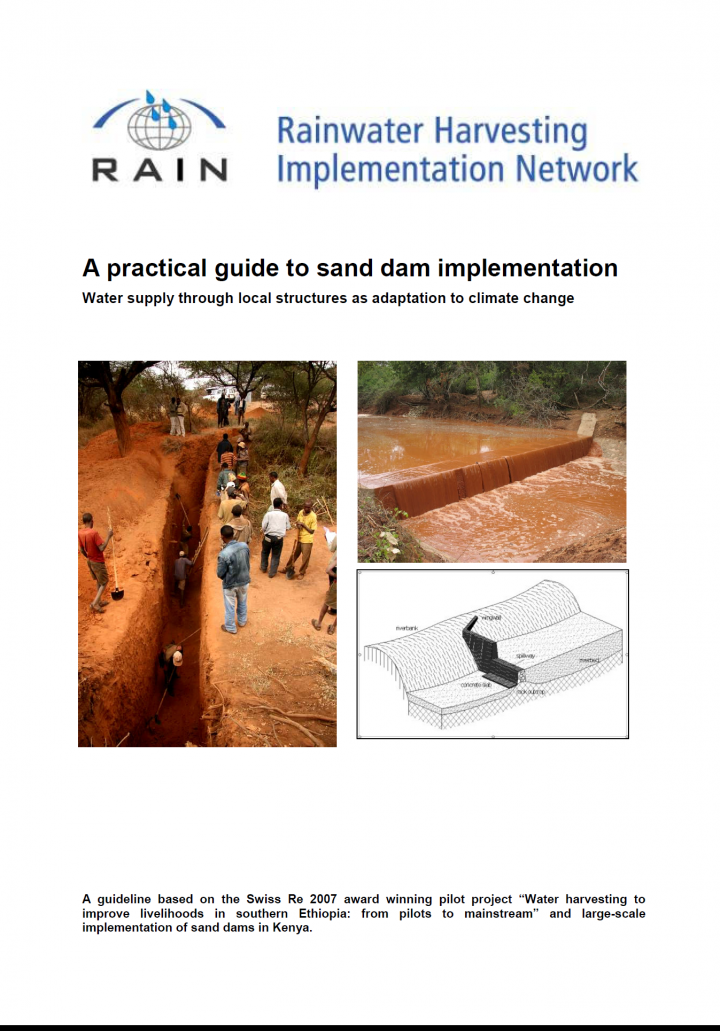A practical guide to sand dam implementation Water supply through local structures as adaptation to climate change RAIN Foundation (2007)
A guideline based on the Swiss Re 2007 award winning pilot project “Water harvesting to improve livelihoods in southern Ethiopia: from pilots to mainstream” and large-scale implementation of sand dams in Kenya.
In the Kituï District of Kenya the SASOL (Sahelian Solutions) Foundation began constructing sand storage dams in 1995. Since this period, over 500 sand storage dams have been constructed. These vary in size according to valley dimensions and peak flows. On average the Kituï dams are between 2-4 metres in height and around 20 metres in length.
The main advantage of the Kituï dams is that they use simple inexpensive technology and can be constructed by local communities mainly with locally-available materials. The cost of an average sand storage dam with a minimum life span of 50 years and storage of at least 2.000 m3 is about US$ 7.500. Some 40% of overall construction cost is provided by the community. They are involved in the construction of sand storage dams by provision of labour and raw materials through sand dam management groups. After construction, these groups ensure maintenance of dams and protection of the water quality as well as promoting ownership and thus sustainability.
Sand dams are usually built in sequence because the ecological damage resulting from having a single point water source is avoided. Also, the water table rises higher and over a larger area compared to individual units. This will result in ecological regeneration. Apart from drinking water security, sand storage dams also provide water for development of rural commercial activities such as small scale irrigation (cash crops and tree nurseries), piped water supply to nearby villages and industrial activities (brick making). Furthermore, since less time is needed to fetch water (see table), school attendance increases significantly and more time can be spent on other income generating activities such as household industries (basket weaving, sewing).
Bibliographic information
RAIN Foundation (2007). A practical guide to sand dam implementation Water supply through local structures as adaptation to climate change RAIN Foundation, Acacia Water, Ethiopian Rainwater Harvesting Association, Action for Development, Sahelian Solutions Foundation (Kenya)
Filter / Tags
English

